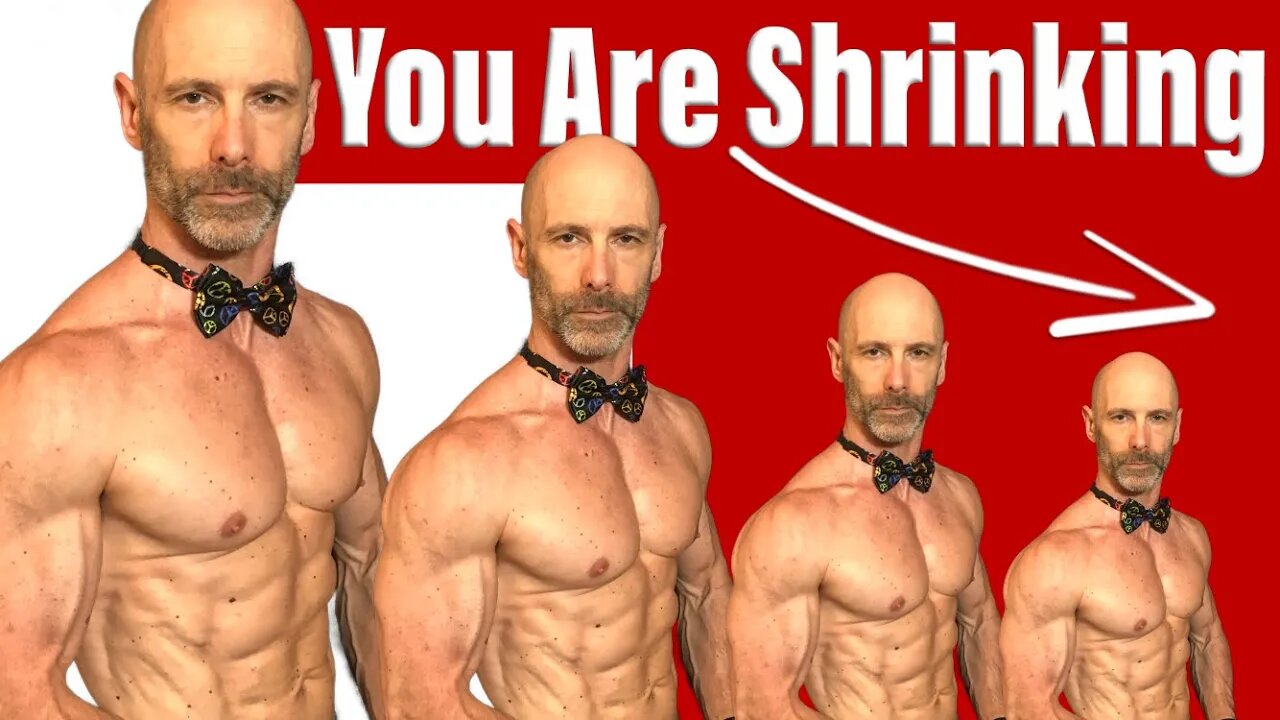Premium Only Content

Why Do We Shrink With Age And How To Stop It
Why do we shrink with age and how to stop it
If there is one thing about ageing we all know is that our bodies go through a lot of changes and our height is one of them.
From the age of 40 onward we lose an average of a 1/4 to 1/2 an inch of height every ten years. But this is an average, some lose more and some don't start shrinking until the age of 70. So what is the difference and how do we stop shrinking with age?
If you are interested in losing body fat and adding muscle, please email me at [email protected] for information on my personal training services.
Check your testosterone levels from home. Just click this link http://trylgc.com/laurence and receive 20% off with code: LAURENCE20 I receive commissions on referrals to LetsGetChecked. I only recommend services I know and trust.
Facebook; https://www.facebook.com/Fit-and-50-5...
My Amazon page link; https://www.amazon.com/shop/fitand50
My Affiliate link to Lebert for their Equalizer bars and more; https://lebertfitness.com/?ref=hmkesu... and use the discount code FITAND50 you will receive 15% off your purchase
First, let's look at the four main changes that cause us to shrink. The first one and probably the most minor is we lose height in the arches of our feet as they flatten over time.
Next is a loss of bone density particularly in your spine this causes compression fractures which are when your vertebrae collapse. Coupling this with muscle weakening allows our posture to become hunched over. Resulting in a lot of lost height.
Another reason we shrink has to do with the discs in our spine. They sit in-between our vertebrae and are design to compress and expand as our spine moves. Kind of like a shock absorber and allows us to move our spine 360 degrees.
As we age these become dehydrated and compressed.
Even gravity will compress these discs over the course of the day. Typically we will shrink by half an inch from the time we get up in the morning to the time we go to bed at night. While we sleep we regain our original size as our disks fill back up with fluid.
To keep our discs healthy and fully hydrated we need to drink enough water. Our bodies will provide the need hydration to our organs first before anywhere else and if there isn’t enough to go around then our discs and back will suffer.
The amount of water each person needs varies based on things like their size and activity level. With the general recommendation being 3.7 litres for men and 2.7 litres for women.
Drinking water isn’t the only thing we can do to help prevent shrinking. Eating a good whole food diet including lots of calcium-rich foods like spinach, almonds, canned salmon and yogurt. Will go a long way to help keep our bone density and stave off osteoporosis.
From a supplement standpoint, the one I often recommend is vitamin D as it is hard to get enough from our food and most of us just don't spend enough time outdoors. Vitamin D helps our bodies absorb calcium.
A good diet can also help you lose weight and this plays an important role because being overweight can negatively affect your posture pulling your spine out of alignment putting unnatural pressure on your discs damaging them and straining the muscles and ligaments in your back.
Strength training and exercise helps to keep our muscles strong so we can hold our bodies in proper alignment. Enabling us to keep our height through good posture.
Exercise does more than just help our muscles it strengthens our bones too. Protecting us from compression fractures. It does this by putting repetitive stress on the bones which in turn the body reacts to by strengthening them.
Not every type of exercise has been shown to increase bone density. For example running and plyometrics
increase density more than cycling or swimming because of the greater stress they put on our bones.
Now running and jumping exercises aren’t going to be appropriate for everyone in the fit and 50 crew so you might want to start with something more moderate like walking or my favourite option resistance training.
When we weight train the force of the muscle pulling on the bone during an exercise is great enough to stimulate increases in bone density and far less demanding on our joints than jumping or running.
It is important to use a heavy enough weight to stimulate bone growth with the current recommendation being to lift between 70 to 80% of your one-rep max.
To halt shrinking as we age we need to strengthen the bone density in our spine. A great way to do this is squats and in particular front squats as they load the spine with our body in a more upright position creating an even pressure on the spine.
https://www.ncbi.nlm.nih.gov/pmc/articles/PMC6279907/
https://www.ncbi.nlm.nih.gov/pmc/articles/PMC3445123/
https://journals.sagepub.com/doi/10.4278/ajhp.130430-QUAN-200
https://spineina.com/blog/how-dehydration-affects-your-spine-and-back/
https://pubmed.ncbi.nlm.nih.gov/10965182/
-
 5:31
5:31
Fit and 50
2 years ago $0.07 earnedHow Much Food to Build Muscle and Lose Fat (Including What I Eat)
6072 -
 LIVE
LIVE
Roseanne Barr
2 hours ago“The Over Emotional Are Always Under Informed” | The Roseanne Barr Podcast #121
9,149 watching -
 LIVE
LIVE
Nerdrotic
3 hours agoThe WitcHER DOA | Box Office Massacre | Massive Industry Layoffs - Friday Night Tights 378
982 watching -
 1:08:42
1:08:42
vivafrei
2 hours agoEric Swalwell in Trouble Again? RFK Jr. "Reverses Course" on Tylenol & Autism? Arctic Frost & MORE!
53.9K13 -
 1:19:51
1:19:51
DeVory Darkins
3 hours agoNewsom EXPOSED after latest bombshell and Democrats pulls shocking stunt regarding shutdown
59.7K19 -
 25:29
25:29
Stephen Gardner
2 hours ago💣 Trump White House UNEXPECTED Move + Thune DESTROYS Schumer on Senate Floor!!
15.2K12 -
 LIVE
LIVE
Drew Hernandez
13 hours agoSPOOKY WOKE HAG CALLS FOR DEMS TO EMBRACE CELEBRATING EXECUTION OF CHARLIE KIRK?!
334 watching -
![MAHA News [10.31] - HHS Coup, Big Food Documentary, SNAP Scams, Microplastic Solutions](https://1a-1791.com/video/fwe2/d9/s8/1/w/q/m/v/wqmvz.0kob-small-MAHA-News-10.31.jpg) LIVE
LIVE
Badlands Media
15 hours agoMAHA News [10.31] - HHS Coup, Big Food Documentary, SNAP Scams, Microplastic Solutions
566 watching -
 1:10:12
1:10:12
The Quartering
3 hours agoFood Wars Begin! Terror Plot Foiled & Much More!
76.9K22 -
 1:09:50
1:09:50
The Culture War with Tim Pool
4 hours agoJamaica Hurricane Predicts POLE SHIFT, The END Is Nigh | The Culture War with Tim Pool
125K100